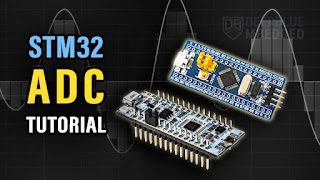What is Arduino?
Arduino is an open-source electronics platform designed for beginners and professionals to easily create interactive projects. It consists of:
Hardware – Programmable microcontroller boards (e.g., Arduino Uno, Nano, Mega).
Software (IDE) – A simple coding environment based on C/C++.
Community & Ecosystem – Thousands of free libraries, tutorials, and projects.
Key Features of Arduino
✅ Easy to Use – No advanced electronics knowledge required.
✅ Plug-and-Play – Works with sensors, motors, displays, and more.
✅ Open-Source – Schematics & code are freely available.
✅ Cross-Platform – Works on Windows, macOS, and Linux.
Popular Arduino Boards
| Board | Microcontroller | Key Features |
|---|---|---|
| Arduino Uno | ATmega328P | Best for beginners, 14 digital I/O pins |
| Arduino Nano | ATmega328P | Compact, breadboard-friendly |
| Arduino Mega 2560 | ATmega2560 | 54 digital pins, great for big projects |
| Arduino Due | ARM Cortex-M3 | 32-bit, faster than classic AVR boards |
| ESP8266/ESP32 | Tensilica Xtensa | Wi-Fi & Bluetooth support |
How Arduino Works
Write Code (Sketch) in Arduino IDE (C/C++ based).
void setup() { pinMode(13, OUTPUT); // Set pin 13 as output } void loop() { digitalWrite(13, HIGH); // Turn on LED delay(1000); // Wait 1 second digitalWrite(13, LOW); // Turn off LED delay(1000); }
Upload to Board via USB.
Interact with Hardware (LEDs, sensors, motors, etc.).
Common Arduino Applications
🔹 LED Blinking & Displays (Basic tutorials)
🔹 Robotics (Motor control, line-following robots)
🔹 Home Automation (Smart lights, sensors)
🔹 IoT Projects (Weather stations, Wi-Fi sensors)
🔹 Prototyping (Before moving to custom PCBs)
Arduino vs. Other Platforms
| Feature | Arduino | Raspberry Pi | ESP32 |
|---|---|---|---|
| Type | Microcontroller | Single-Board Computer | Microcontroller |
| OS | None (Bare Metal) | Linux-based | None (RTOS optional) |
| Ease of Use | Very Easy | Moderate | Moderate |
| Wi-Fi/Bluetooth | No (Unless using add-ons) | Yes | Yes |
| Best For | Simple electronics | Complex computing | IoT & wireless projects |
Getting Started with Arduino
Buy an Arduino Starter Kit (Uno + sensors + cables).
Install Arduino IDE (Download here).
Try Basic Projects:
Blink an LED
Read a button input
Control a servo motor
Why Choose Arduino?
Perfect for beginners in electronics & coding.
Huge community support (forums, YouTube tutorials).
Scalable – Can be used in professional projects too.




评论
发表评论